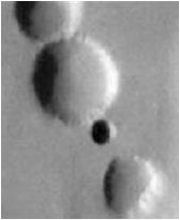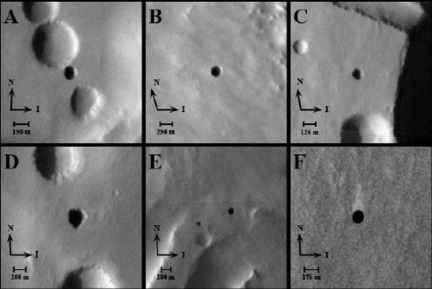Cavernous findings from Mars
Images taken by a Mars-orbiting spacecraft show what appear to be cave entrances on the Red Planet. By sheltering organisms from such hazards as ultraviolet radiation and micrometeoroid bombardment, caves “could be among the only places on Mars to find evidence of past or present microbial life,” says Glen Cushing of the U.S. Geological Survey in Flagstaff, Ariz.


He and his colleagues identified seven possible skylight entrances to caverns in pictures recorded by a visible-light-and-infrared camera on the Mars Odyssey spacecraft. They presented the findings in March at the annual Lunar and Planetary Science Conference in Houston.
The dark, circular structures, 100 to 250 meters across, lie on the flanks of a volcano called Arsia Mons. The high-altitude region is riddled with sunken features, but the dark circles are distinct, Cushing says.
It’s possible that the structures aren’t deep, Cushing acknowledges. But the nearly constant temperatures of the structures—different from temperatures of nearby surfaces—suggest that they’re openings to caverns, he asserts.
His team is now conducting a planetwide search for other caves, especially at lower elevations, where higher atmospheric pressure could allow water to exist as a liquid.







